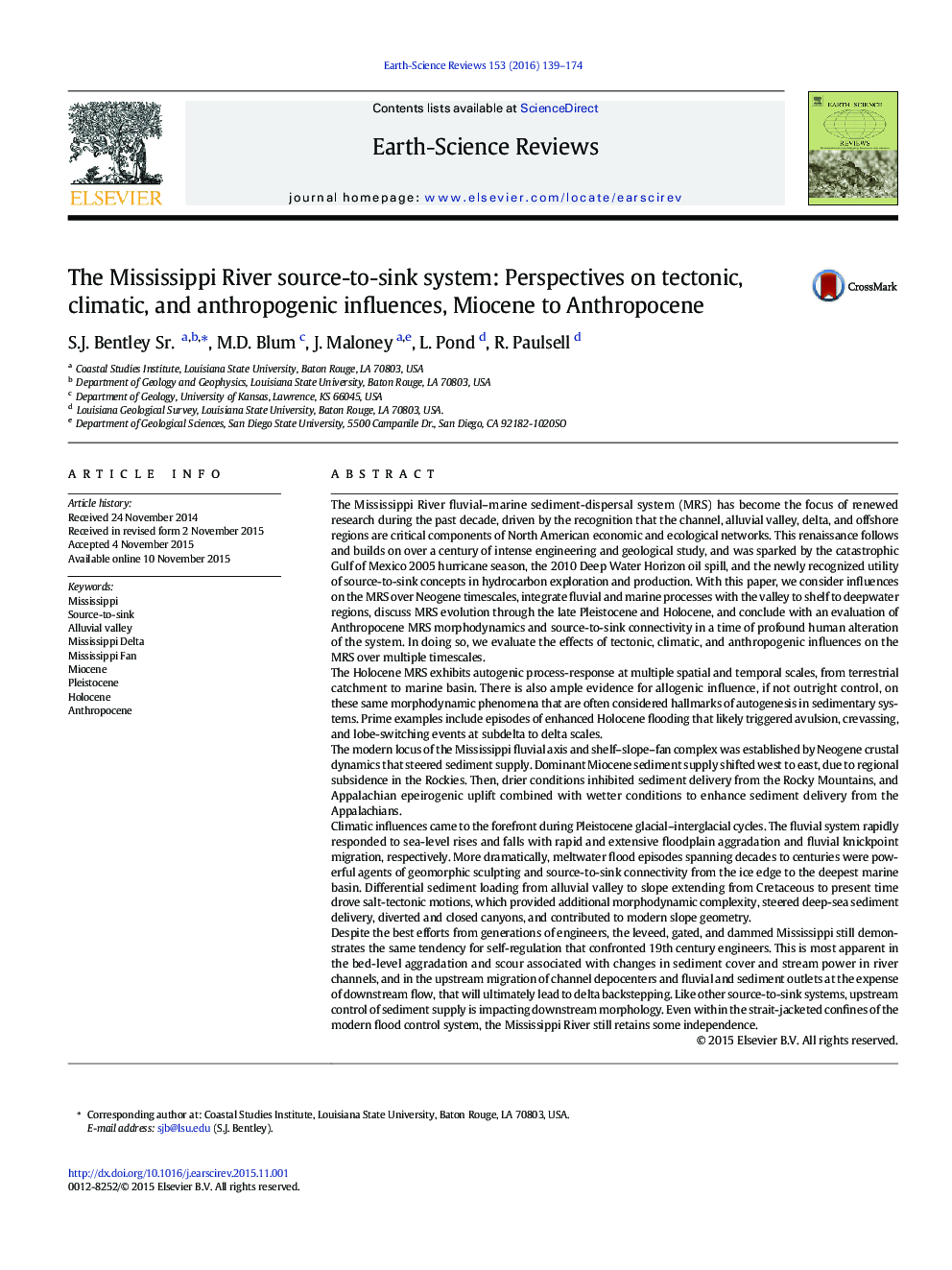| کد مقاله | کد نشریه | سال انتشار | مقاله انگلیسی | نسخه تمام متن |
|---|---|---|---|---|
| 4725609 | 1639949 | 2016 | 36 صفحه PDF | دانلود رایگان |
The Mississippi River fluvial–marine sediment-dispersal system (MRS) has become the focus of renewed research during the past decade, driven by the recognition that the channel, alluvial valley, delta, and offshore regions are critical components of North American economic and ecological networks. This renaissance follows and builds on over a century of intense engineering and geological study, and was sparked by the catastrophic Gulf of Mexico 2005 hurricane season, the 2010 Deep Water Horizon oil spill, and the newly recognized utility of source-to-sink concepts in hydrocarbon exploration and production. With this paper, we consider influences on the MRS over Neogene timescales, integrate fluvial and marine processes with the valley to shelf to deepwater regions, discuss MRS evolution through the late Pleistocene and Holocene, and conclude with an evaluation of Anthropocene MRS morphodynamics and source-to-sink connectivity in a time of profound human alteration of the system. In doing so, we evaluate the effects of tectonic, climatic, and anthropogenic influences on the MRS over multiple timescales.The Holocene MRS exhibits autogenic process-response at multiple spatial and temporal scales, from terrestrial catchment to marine basin. There is also ample evidence for allogenic influence, if not outright control, on these same morphodynamic phenomena that are often considered hallmarks of autogenesis in sedimentary systems. Prime examples include episodes of enhanced Holocene flooding that likely triggered avulsion, crevassing, and lobe-switching events at subdelta to delta scales.The modern locus of the Mississippi fluvial axis and shelf–slope–fan complex was established by Neogene crustal dynamics that steered sediment supply. Dominant Miocene sediment supply shifted west to east, due to regional subsidence in the Rockies. Then, drier conditions inhibited sediment delivery from the Rocky Mountains, and Appalachian epeirogenic uplift combined with wetter conditions to enhance sediment delivery from the Appalachians.Climatic influences came to the forefront during Pleistocene glacial–interglacial cycles. The fluvial system rapidly responded to sea-level rises and falls with rapid and extensive floodplain aggradation and fluvial knickpoint migration, respectively. More dramatically, meltwater flood episodes spanning decades to centuries were powerful agents of geomorphic sculpting and source-to-sink connectivity from the ice edge to the deepest marine basin. Differential sediment loading from alluvial valley to slope extending from Cretaceous to present time drove salt-tectonic motions, which provided additional morphodynamic complexity, steered deep-sea sediment delivery, diverted and closed canyons, and contributed to modern slope geometry.Despite the best efforts from generations of engineers, the leveed, gated, and dammed Mississippi still demonstrates the same tendency for self-regulation that confronted 19th century engineers. This is most apparent in the bed-level aggradation and scour associated with changes in sediment cover and stream power in river channels, and in the upstream migration of channel depocenters and fluvial and sediment outlets at the expense of downstream flow, that will ultimately lead to delta backstepping. Like other source-to-sink systems, upstream control of sediment supply is impacting downstream morphology. Even within the strait-jacketed confines of the modern flood control system, the Mississippi River still retains some independence.
Journal: Earth-Science Reviews - Volume 153, February 2016, Pages 139–174
